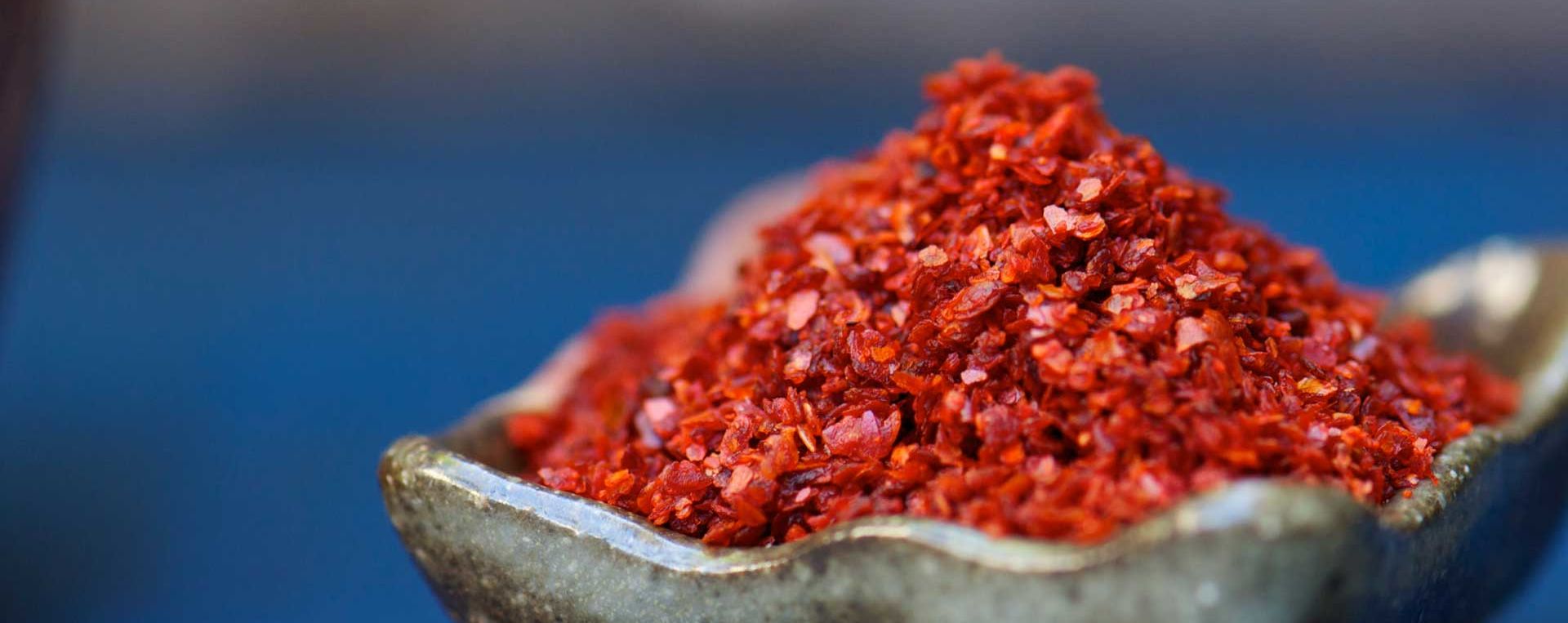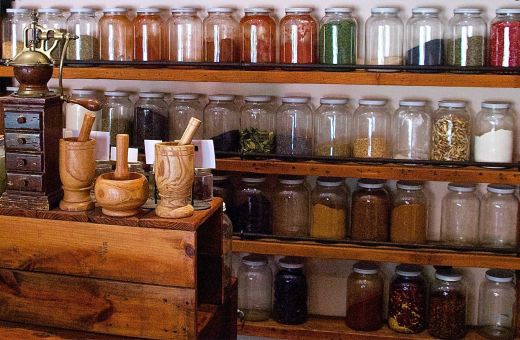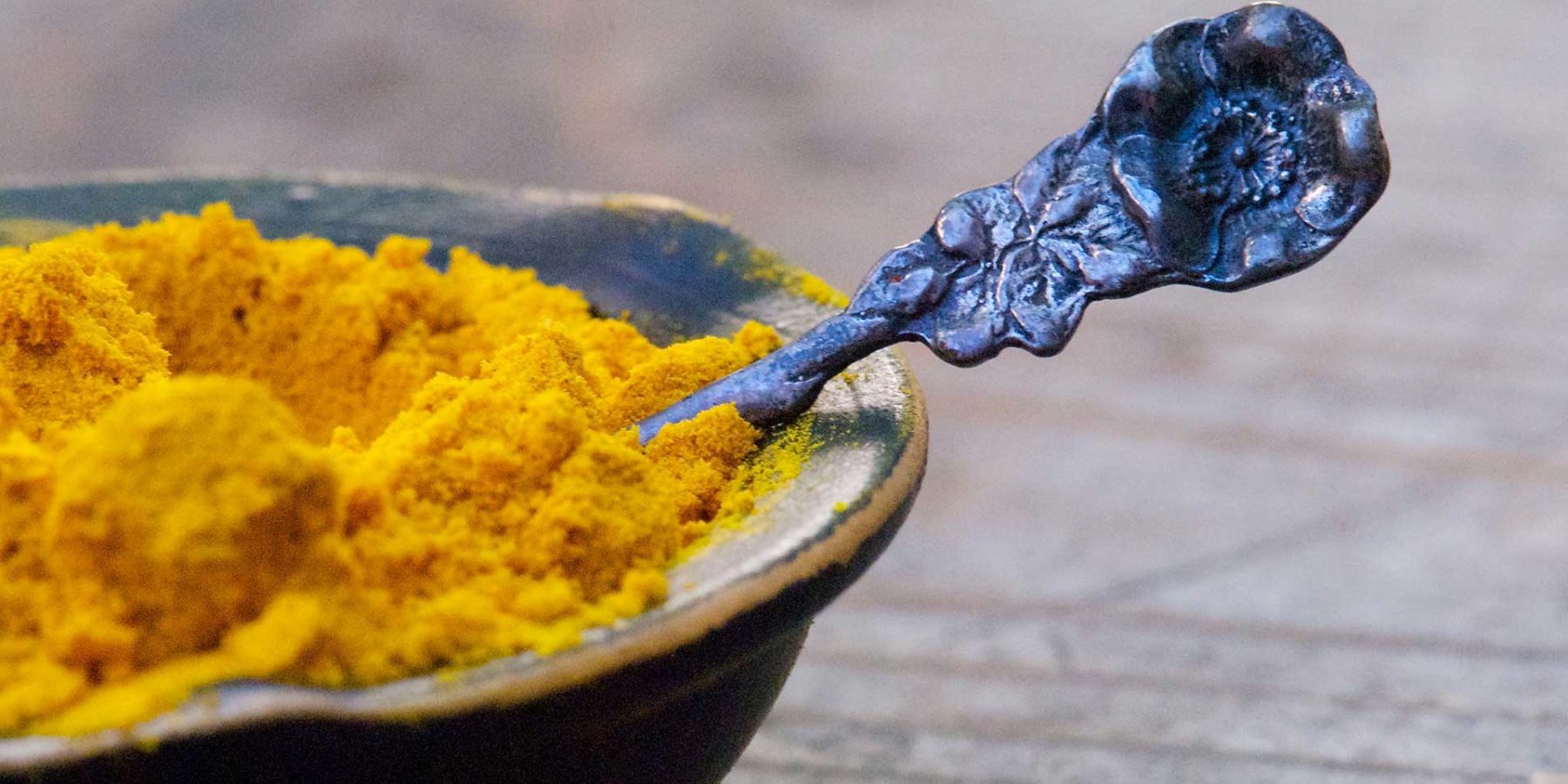LOOKING AROUND
A behind-the-scenes look at the property—from the décor to the history.
Read On 
The craft of spice blending is a solo journey into the senses. While the end products are joyfully shared, the process of creation is personal, individual, and, at times, collaborative. Behind the magical blends are the artists—modern-day alchemists of sorts—delighting and tantalizing the palate and awakening a piece of your personal history or taking you to a place unknown.
Masters at the art understand the intimate side to spice blending: the deep connection to the flavors, aromas, and familiar memories of family dinners, get-togethers, faraway destinations, and, yes, even childhood. They study the craft, practice, and perfect each blend like a culinary sorcerer.
The results can transform a meal or product from potentially boring and mundane into something extraordinary, pleasing, and memorable. And at the root of their profession is not only the passionate pursuit, but also the lofty goal to minimize the time it takes to make a delicious meal, cocktail, or decadent dessert.
On a quest for answers, we reached out to a community of trusted chefs and caterers who eagerly connected us to industry insiders, providing a gateway to the world of spices and blends.
Three talented spice artisans—Kathy FitzHenry formerly of Juliet Mae Spices; Lior Lev Sercarz, master spice blender, author of The Art of Blending and owner of La Boite, the elite spice and biscuit shop in New York; and Peter Bahlawanian, co-owner and master blender of Spice Station in Los Angeles and Montreal—indulged us in a conversation of their passionate work. Beyond being studious and disciplined in their craft, they surprisingly have quite a few things in common.
They all have a deep fascination with spices. They understand and appreciate the cultural influence and global connection. Their approach to blending and procuring spices is a labor of love.
Collectively, each artisan lives and breathes all things spice, and emphatically states that the use of spices and custom blends is expanding. Spice usage and the interest in exotic blends is not a culinary trend, but a necessary part of cooking that underscores a burgeoning interest in global cuisine.

They focus on small-batch processing and use exceptionally high-quality ingredients sourced from trusted farmers and direct importers whenever possible. They have cultivated strong relationships with their suppliers over the years.
With a list of celebrity chef clientele and loyal home cooks, it seems for each there is a story behind the blends, whether it is historical or personal. Their handcrafted mixtures often represent a memory, or as Lior states, “a place in time.”
It is important to point out that they are not crafting mere accessories to a meal but more like providing the belt that keeps your pants up—essentially creating a necessary piece to the dining puzzle. And as historians will tell you, the modern world would not likely exist if it were not for the ancient spice trade.
After conversations with these talented folks, we managed to piece together some basic tenants or principles to the blending art … and some background detail to the trade. Keep in mind however, as Kathy states, “The rules are unwritten.”
Kathy crafted her own blends for over 10 years. Like a well-versed flavorologist, she details the correlation between the language of music and the harmony of spices. She spoke of amalgamating flavors and cascading notes.
I created a rough analogy: If the palate is the instrument, then essentially the flavors become the notes. She adds, “Consider along the way texture, size (whole, ground). Think about the background, middle and top notes.”

She explained, “Find a good recipe and use it as your map. Once you understand the proportions, you can begin to improvise: push flavors up or down or even add other notes like hot or sour. Be creative. Smell. Taste. Experiment.”
Lior offered a unique perspective. He stated he would not create a spice blend for somebody he did not know well.
The world of spices is complex and deeply personal. It is like learning a new language or playing an instrument. You need to start with a reference point and an understanding of the spices and the person for whom you’re creating a blend before you can master the symphony—or tell “the story,” as Lior calls it.
He has more than 90 blends, all unique, with intriguing names like B-Mary, Bombay N.3, O.M.G, Blue Grass and Amahari. Originally from France, Lior started experimenting eight years ago in his basement apartment. “It is a work in progress with the end result in mind,” he says. The process of creating a new blend can take an hour to a day to six months and can be more complex in the individual steps.
Lior offers several classes on spice blending that sell out. His business is built on word of mouth, and he takes the craft to the highest level. With a roster of celebrities and star chefs, he still encourages people to develop their own palate – to be passionate.
He sees his blending classes as a way to explore and enjoy the process of blending. He also realizes that not everybody will continue on the passionate pursuit of blending, but in the process he hopes they have fun.
As a world music producer and entrepreneur before embarking on a spice business, Peter notices the correlation between music, language and cultures when developing blends. “You can create a beautiful symphony, but you need to understand the different characteristics of the spices in order to create a good end product.”
Acknowledging that taste is individualized, Peter mentions that when people come into his boutique, which is something of a museum, a certain spice will resonate with different customers. They may immediately pick up on the aroma of nutmeg or cumin, for example. Customers are also surprised by the intensity of flavor in their spices.
Peter says that most people are familiar with the “watered-down version” of spices found in grocery stores. Custom-ground spices may seem stronger because they represent the true characteristics of the spice. His philosophy of selling the freshest product translates into buying in small batches and eliminating the lengthy distribution and packaging process, which dissipates and degrades the energy, oil, and flavor.
He was drawn to spices because they were a part of his life, culture, and his family’s cooking. Peter’s grandparents grew up in Armenian neighborhoods, now eastern Turkey, while his parents are from Beirut. Keeping his heritage in mind, he wanted to recreate the flavorful dishes he grew up on.
Peppercorn, which is under the spice umbrella, is freshest in the first hour of grinding, he says. “After a month of storage, the flavor is not the same. Also, heat, humidity, and light that it is exposed to in the distribution and co-packing process affect the flavor.”
 “Paprika can taste like dust if it is not fresh,” says Peter. “We reinvigorate the palate and reintroduce people to what a spice should taste like in its pure, unadulterated form.”
“Paprika can taste like dust if it is not fresh,” says Peter. “We reinvigorate the palate and reintroduce people to what a spice should taste like in its pure, unadulterated form.”
Before crafting a blend, Peter may start with a concept of what part of the world he wants to represent. Then he will draw from those spices, such as cinnamon, oregano or vanilla, using his knowledge of regional differences that impact the flavor. He also may create fun fusion blends such as Asian Cajun spice, but he maintains that it is important to stay genuine to the individual cultures and not veer too far off course.
“We are not just selling spices; we are educating and sharing our passion,” he comments. He hopes to one day see more exotic spices on the shelves, such as wattleseed and Tasmanian pepper, which are difficult to import.
The world of spices is fascinating and vast. Recipes are becoming more global and sophisticated and include ingredients such as urfa biber, vadouvan, berbere, dukkah, za’atar, asafoetida, fenugreek, nigella, and Ceylon cinnamon. If you didn’t know better, you would think you were learning a new language or even being updated on the current trend in celebrity baby names.
The artisans who passionately pursue the art of spice expand our taste buds and walk us back in time—or simply allow us to leap into the future with an array of flavors and aromas that stimulate the senses and add some much-needed spice and deliciousness to the complexity of life.
Written & photographed by Kara Mickelson